1. Milk frothers for dressings
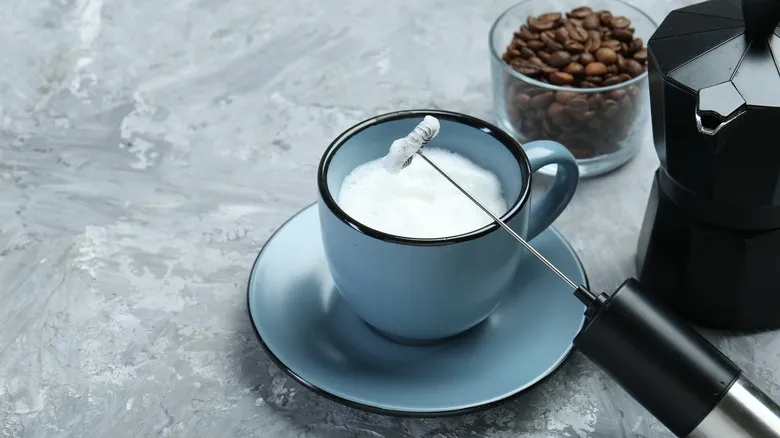
Dressings are essential to any salad, and in a world that is increasingly focused on health, mastering the art of making a great dressing has become a sought-after skill. Traditionally, there are two main methods to create dressings. You can either whisk the ingredients together by hand or use a food mixer to simplify the process.
Regardless of the method, the objective remains the same: all dressings consist of a blend of acids and fats. Whisking is crucial for achieving an emulsion—a combination of two liquids that wouldn’t mix on their own. Some of the more flavorful dressings can require significant effort to blend, and pulling out a stand mixer can sometimes feel excessive. This is where a milk frother comes into play.
Milk frothers are compact, battery-operated whisks designed to aerate milk. However, their rapid spinning makes them ideal for creating a smooth and creamy salad dressing as well. Simply add your ingredients to a cup or beaker, then immerse the milk frother into the mixture, ensuring it’s fully submerged before turning it on. Blend for about thirty to forty seconds, or until the dressing reaches a consistent texture and appearance. While it may not work as effectively for thicker dressings like ranch, it’s a game changer for lighter mixtures—even for whisking eggs for scrambling.
2. Stick blenders for sauces
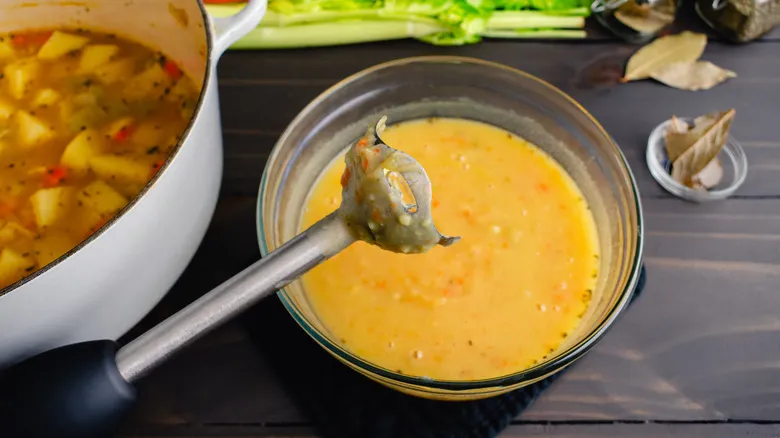
The craft of making sauces can be traced back to Roman times, if not earlier. In classic French cooking, a saucier is a vital member of the brigade de cuisine. For the dedicated home cook, however, it's a solo endeavor; mastering the art of a basic sauce is just one of many challenges to overcome.
Not all sauces are equally intricate. A basic béchamel, for instance, is made from milk, flour, butter, and a bit of effort. While mixing these ingredients with a whisk or spatula can lead to lumps, there are ways to remedy that.
On the other hand, crafting a more sophisticated sauce, like hollandaise, presents a different level of challenge. The aim is to achieve a smooth emulsion using egg yolk, lemon juice, and melted butter. The traditional technique involves whisking the eggs and lemon over a bain-marie before slowly incorporating the melted butter, but the risk of separation is a genuine concern.
This is where the stick blender proves invaluable. Simply combine your egg yolk and lemon mixture in a tall cup that can accommodate the blender, add the melted butter, and blend. The high-speed rotation of the blades creates a perfect emulsion in mere seconds. This technique is versatile; it can also be used to make custards, eliminate lumps from sauces, prepare smoothies, whip cream, and even create impeccable fresh mayonnaise.
3. Coffee grinder for spice mixes

The taste of coffee has evolved significantly over the years, and the traditional cup of joe now bears little resemblance to the vast array of flavors, varieties, and options available today. In recent times, the trend of brewing freshly roasted beans at home using either a blade or burr grinder has surged, making it easier than ever to enjoy freshly ground coffee.
However, while both types of grinders are designed for specific purposes, they can also be adapted for other uses. One challenge in replicating the complex spice profiles found in various global cuisines is the quality of the spices we use. Store-bought spices often fall short compared to freshly ground, recently toasted spices made at home. Although dedicated spice grinders are available, those who own a coffee grinder—especially a blade grinder—can easily repurpose it for this task.
It's important to clean the blades thoroughly before and after use to avoid any unwanted flavor transfer, but the versatility of a coffee grinder doesn't stop there. It can also be utilized to create popcorn salt, breadcrumbs, gluten-free flour, powdered sugar, and much more.
4. Air fryer for French toast
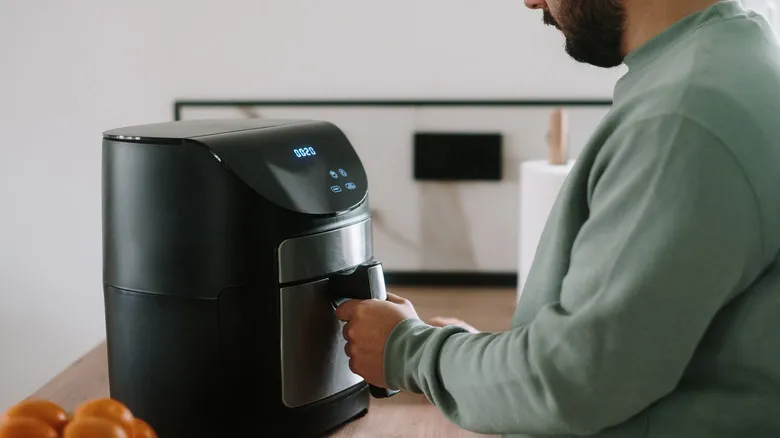
The era when air fryers were considered a niche appliance used by only a select few is now a thing of the past – over 75 million units have been sold. Originally introduced by the Dutch electronics company Philips in 2010, the air fryer initially received a lukewarm reception but quickly gained immense popularity just a few years later.
Its main appeal lies in its ability to brown food without the need for excessive oil, which resonated with many consumers. Soon, the internet was flooded with tips, tricks, and hacks to maximize the air fryer's potential. However, while its health benefits were heavily emphasized, its remarkable versatility often went overlooked. The air fryer can do so much more.
Take French toast, for instance. It’s a dish that’s perfect for the air fryer. The process remains the same: prepare your egg mixture and dip your sliced bread into it. Instead of using a skillet, simply place the bread in a parchment-lined air fryer, set it to 350 degrees, and cook for about four minutes before flipping it over for an additional couple of minutes.
But French toast isn’t the only dish the air fryer excels at without the hassle and mess of traditional cooking methods. It’s also excellent for toasting nuts, achieving perfectly hard-boiled eggs, roasting garlic, toasting spices, and melting cheese.
5. Potato ricer for hummus
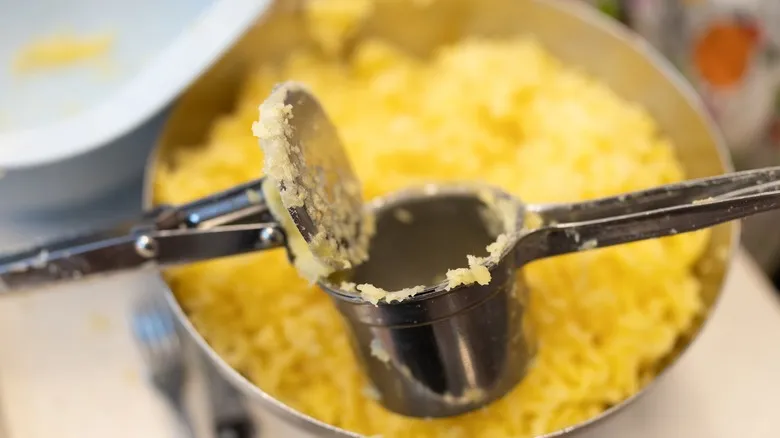
We inhabit a world where analog devices are often met with deep skepticism. Everything seems to require power, digital functionality, labor-saving features, and, if possible, intelligence. The food processor bombards potential buyers with a barrage of enticing descriptors: slice, dice, chop, shred. While these are all valuable functions, the question remains: can it make rice?
More specifically, can it create mashed potatoes? The answer is yes, but the result may not be up to par. The key to achieving perfect mashed potatoes lies in the art of hand-mashing; food processor blades are too harsh, and overmixing can lead to a gluey consistency. If you prefer your mash to be exceptionally fluffy, you’ll need to put in a little extra effort. Enter the potato ricer.
The potato ricer’s singular purpose highlights its effectiveness; it’s specifically designed for making mash. However, its utility extends beyond that. The ricer can also function as a strainer, allowing you to toss in a can of chickpeas—reserving some aquafaba for later—along with tahini, minced garlic, and seasoning to whip up a delightful hummus. You may need to strain the mixture a few times and incorporate some lemon juice and aquafaba if it’s too thick; a splash of olive oil is always a welcome addition, too.
6. Swiss peelers for grating cheese

It often seems like there’s a specialized kitchen gadget for every task, an endless array of custom-designed tools that end up gathering dust in forgotten drawers until the end of time.
Take the Swiss peeler, for instance: a budget-friendly, indispensable tool that consistently appears on top potato peeler lists with minimal effort or promotion. Yet, it offers far more than just peeling the occasional root vegetable.
Known in Europe as the Rex, the Swiss peeler has been around since its creation in 1947 by Swiss engineer Alfred Neweczerzal. His experience in the army, where he peeled countless potatoes, led him to believe there had to be a more efficient solution. With around fifty million units sold, he has certainly made his case.
However, the Swiss peeler is capable of much more. It can zest lemons, create curls of butter, shred lettuce, and even function as a mandoline for ultra-thin slicing, whether it’s a clove of garlic for a classic aglio e olio or meat for a charcuterie board.
The peeler truly shines when you need grated cheese in a flash. Gliding the blade over a block of cheese yields delicate slices that can quickly be chopped into tidy strips. This technique works particularly well with low-moisture mozzarella or cheddar, and it can also handle melting cheeses with ease.
7. Bench scraper for mincing garlic

Things often progress in cycles. There was a period when villagers would take their milled flour to a baker. Eventually, people started baking at home, but after realizing it was too labor-intensive, they shifted back to industrial outsourcing. Then came 2020, and suddenly, the DIY trend surged in popularity, with individuals becoming passionate about perfecting quick breads, pastries, and sourdough creations.
Those new to baking had to equip themselves. They needed to purchase tins, obsess over proofing baskets, share starter cultures, and, of course, admire bench scrapers. These tools are among the most practical kitchen aids available. Used as a basic knife for cutting or portioning dough on the work surface, the bench scraper is also invaluable for cleanup; it can collect crumbs, finely chop herbs, and scrape dough off other utensils.
However, it truly shines when it comes to working with garlic. Mincing garlic is a culinary skill that can be tricky to master. Garlic cloves can be awkward to handle, making it difficult to keep one steady while chopping. Fortunately, the long, flat blade of the dough scraper is ideal for slicing garlic vertically, allowing you to lay the pieces flat and mince them to your desired consistency quickly and efficiently.
8. Ice cream scoops for meatballs
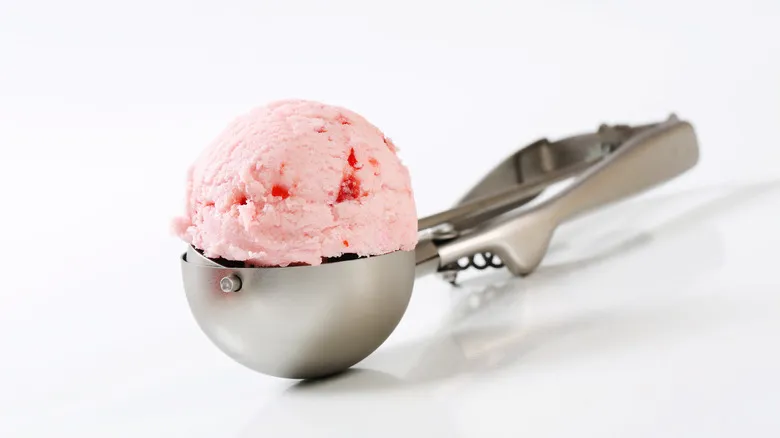
Ice cream—whether homemade or store-bought—is one of those indulgent treats that really calls for moderation. Rich and irresistible, it’s one of the few foods people enjoy while still frozen, which explains why we created a handy tool to help us serve it up straight from the container.
The classic ice cream scoop serves two main purposes. First, its sturdy design allows it to easily cut through the resistance of the frozen treat. Second, when you release it, it forms a delightfully round scoop of icy delight. Unfortunately, this handy tool often doesn’t get the attention it deserves. Thankfully, there are other creative ways to put it to good use.
An ice cream scoop is ideal for portioning cookie dough, which, as any baker knows, starts off as small round balls on a baking sheet. It works just as well for melons, squash, or other soft vegetables, but it has one more clever use for something we eat more frequently.
It turns out that an ice cream scoop is perfect for making evenly sized meatballs. The process is nearly foolproof: simply scoop out a portion of your meatball mixture, and you’re all set. Just be sure to clean the scoop thoroughly after using it with raw meat and dairy, as they shouldn’t be mixed.
9. Rice cookers for soup

Rice is a kitchen essential that many struggle to perfect. That's where the rice cooker comes in. This handy appliance typically includes a bowl, heating plate, thermostat, and a digital display with programmable settings. Fully automated, it allows you to simply turn it on and walk away, ensuring perfectly cooked rice every time. This is great if you're in the mood for rice, but not so much if you're craving something different. Fortunately, rice cookers are versatile and can be used for much more than just rice—like making soup. You can prepare your broth and aromatics, using the rice cooker similarly to a slow cooker, and then add rice or pasta towards the end of the cooking process.
Cakes, beans, polenta, deep-dish pizza? A rice cooker can tackle it all. The secret lies in its fundamental design: a bowl, heating plate, and thermostat, which are similar to those found in a standard Crock-Pot.
However, the rice cooker's design means that its programmable features are somewhat limited for other dishes. While you can still adjust heat and time, the cooker is primarily set up for rice, so you'll need to monitor your food as it cooks. Fortunately, this isn't a major issue with soups; just remember to stir every 15 minutes or so.
Recommended
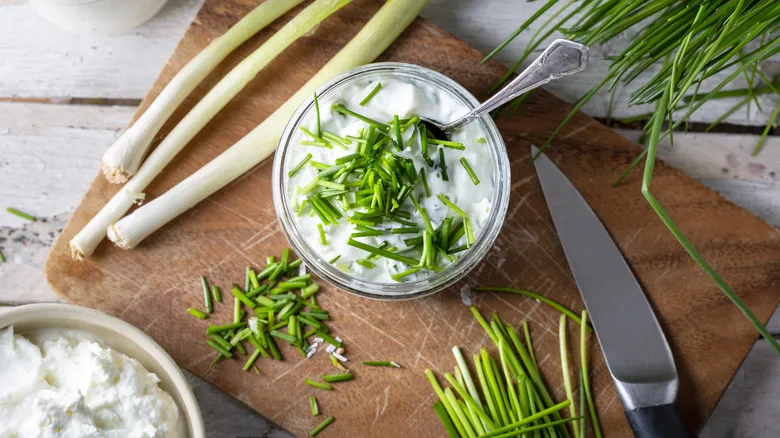
3 Sour Cream Substitutes To Use And 3 To Skip
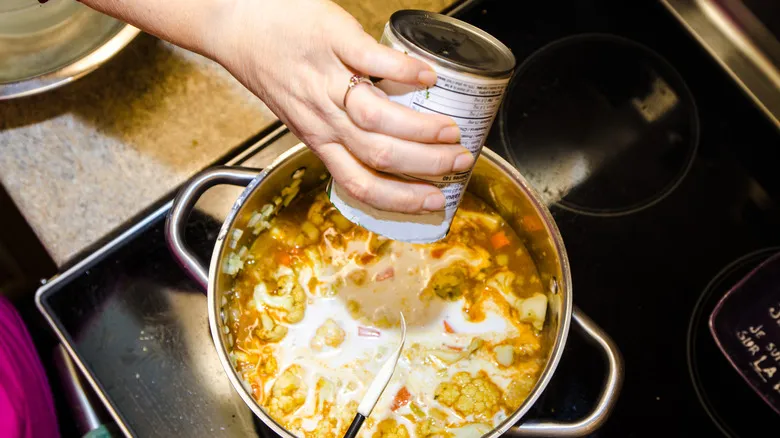
Does Canned Coconut Milk Ever Go Bad?

12 Things You Didn't Know Your Ice Cream Maker Could Do
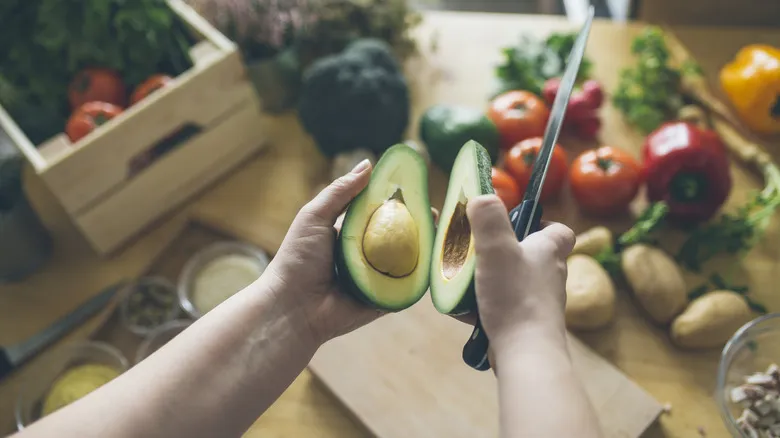
Metal Knives Are Spoiling Your Avocados. Here's What To Use Instead
Next up

